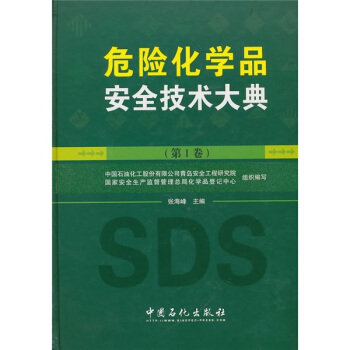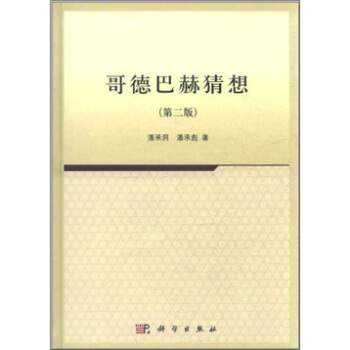![引力 [AN INTRODUCTION TO EINSTEINS GENERAL RELATIVITY]](https://pic.tinynews.org/10175889/f6912b33-e7b1-4dfe-9c31-f6b50b170195.jpg)

具体描述
內容簡介
Einstein的廣義相對論是現代物理的基石。它包括瞭大量講述時空的前沿話題,黑洞、重力波以及宇宙學。隨著廣義相對論越來越成為同時代物理和天文學的中心,其在本科教育中的地位也顯得尤為重要。這本全新的教材很適閤本科生作為瞭解該課程的基礎理論。物理優先、數學理論盡可能少、大量的應用實例,作者為物理學傢和對該學科感興趣的讀者自然順暢的講述瞭這門學科。讀者對象:《引力》適用於物理專業的本科生,研究生以及對該學科感興趣的廣大讀者。
目次:(第一部分)牛頓物理和狹義相對論中的時空:引力物理;幾何作為物理;牛頓物理中的空間;時間和引力;狹義相對論原理;狹義相對論力學; (第二部分)廣義相對論的彎麯時空:引力作為幾何;彎麯時空的描述;測地綫;球形星體外的幾何;廣義相對論的太陽係檢驗;實用相對論引力;引力坍縮和黑洞;天體物理學黑洞;微小轉動;鏇轉黑洞;引力波;宇宙觀察;宇宙學模型;什麼是宇宙以及為什麼;(第三部分)Einstein方程:數學部分;麯率和Einstein方程;麯率源;引力波發射;相對論星體。
內頁插圖
目錄
PrefacePART I SPACE AND TIME IN NEWTONIAN PHYSICS AND SPECIAL RELATIVITY
1 Gravitational Physics
2 Geometry as Physics
2.1 Gravity Is Geometry
2.2 Experiments in Geometry
2.3 Different Geometries
2.4 Specifying Geometry
2.5 Coordinates and Line Element
2.6 Coordinates and Invariance
3 Space, Time, and Gravity in Newtonian Physics
3.1 Inertial Frames
3.2 The Principle of Relativity
3.3 Newtonian Gravity
3.4 Gravitational and Inertial Mass
3.5 Variational Principle for Newtonian Mechanics
4 Principles of Special Relativity
4.1 The Addition of Velocities and the Michelson-Morley Experiment
4.2 Einsteins Resolution and Its Consequences
4.3 Spacetime
4.4 Time Dilation and the Twin Paradox
4.5 Lorentz Boosts
4.6 Units
5 Special Relativistic Mechanics
5.1 Four-Vectors
5.2 Special Relativistic Kinematics
5.3 Special Relativistic Dynamics
5.4 Variational Principle for Free Particle Motion
5.5 Light Rays
5.6 Observers and Observations
PART Ⅱ THE CURVED SPACETIMES OF GENERAL RELATIVITY
6 Gravity as Geometry
6.1 Testing the Equality of Gravitational and Inertial Mass
6.2 The Equivalence Principle
6.3 Clocks in a Gravitational Field
6.4 The Global Positioning System
6.5 Spacetime Is Curved
6.6 Newtonian Gravity in Spacetime Terms
7 The Description of Curved Spacetime
7.1 Coordinates
7.2 Metric
7.3 The Summation Convention
7.4 Local Inertial Frames
7.5 Light Cones and World Lines
7.6 Length, Area, Volume, and Four-Volume for Diagon Metrics
7.7 Embedding Diagrams and Wormholes
7.8 Vectors in Curved Spacetime
7.9 Three-Dimensional Surfaces in Four-Dimensional Spacetime
8 Geodesics
8.1 The Geodesic Equation
8.2 Solving the Geodesic Equation——-Symmetries and Conservation Laws
8.3 Null Geodesics
8.4 Local Inertial Frames and Freely Falling Frames
9 The Geometry Outside a Spherical Star
9.1 Schwarzschild Geometry
9.2 The Gravitational Redshift
9.3 Particle Orbits——Precession of the Perihelion
9.4 Light Ray Orbits——The Deflection and Time Delay of Light
10 Solar System Tests of General Relativity
10.1 Gravitational Redshift
10.2 PPN Parameters
10.3 Measurements of the PPN Parametery
10.4 Measurement of the PPN Parameter B-Precession of Mercurys Perihelion
11 Relativistic Gravity in Action
11.1 Gravitational Lensing
11.2 Accretion Disks Around Compact Objects
11.3 Binary Pulsars
12 Gravitational Collapse and Black Holes
12.1 The Schwarzschild Black Hole
12.2 Collapse to a Black Hole
12.3 Kruskal-Szekeres Coordinates
12.4 Nonspherical Gravitational Collapse
13 Astrophysical Black Holes
13.1 Black Holes in X-Ray Binaries
13.2 Black Holes in Galaxy Centers
13.3 Quantum Evaporation of Black Holes——Hawking Radiation
14 A Little Rotation
14.1 Rotational Dragging of Inertial Frames
14.2 Gyroscopes in Curved Spacetime
14.3 Geodetic Precession
14.4 Spacetime Outside a Slowly Rotating Spherical Body
14.5 Gyroscopes in the Spacetime of a Slowly Rotating Body
14.6 Gyros and Freely Falling Frames
15 Rotating Black Holes
15.1 Cosmic Censorship
15.2 The Kerr Geometry
15.3 The Horizon of a Rotating Black Hole
15.4 Orbits in the Equatorial Plane
15.5 The Ergosphere
16 Gravitational Waves
16.1 A Linearized Gravitational Wave
16.2 Detecting Gravitational Waves
16.3 Gravitational Wave Polarization
16.4 Gravitational Wave Interferometers
16.5 The Energy in Gravitational Waves
17 The Universe Observed
17.1 The Composition of the Universe
17.2 The Expanding Universe
17.3 Mapping the Universe
18 Cosmological Models
18.1 Homogeneous, Isotropic Spacetimes
18.2 The Cosmological Redshift
18.3 Matter, Radiation, and Vacuum
18.4 Evolution of the Flat FRW Models
18.5 The Big Bang and Age and Size of the Universe
18.6 Spatially Curved Robertson-Walker Metrics
18.7 Dynamics of the Universe
19 Which Universe and Why?
19.1 Surveying the Universe
19.2 Explaining the Universe
PART III THE EINSTEIN EQUATION
20 A Little More Math
20.1 Vectors
20.2 Dual Vectors
20.3 Tensors
20.4 The Covariant Derivative
20.5 Freely Falling Frames Again
21 Curvature and the Einstein Equation
21.1 Tidal Gravitational Forces
21.2 Equation of Geodesic Deviation
21.3 Riemann Curvature
21.4 The Einstein Equation in Vacuum
21.5 Linearized Gravity
22 The Source of Curvature
22.1 Densities
22.2 Conservation
22.2 Conservation of Energy-Momentum
22.3 The Einstein Equation
22.4 The Newtonian Limit
23 Gravitational Wave Emission
23.1 The Linearized Einstein Equation with Sources
23.2 Solving the Wave Equation with a Source
23.3 The General Solution of Linearized Gravity
23.4 Production of Weak Gravitational Waves
23.5 Gravitational Radiation from Binary Stars
23.6 The Quadrupole Formula for the Energy Loss in Gravitational Waves
23.7 Effects of Gravitational Radiation Detected in a Binary Pulsar
23.8 Strong Source Expectations
24 Relativistic Stars
24.1 The Power of the Pauli Principle
24.2 Relativistic Hydrostatic Equilibrium
24.3 Stellar Models
24.4 Matter in Its Ground State
24.5 Stability
24.6 Bounds on the Maximum Mass of Neutron Stars
APPENDIXES
A Units
A.1 Units in General
A.2 Units Employed in this Book
B Curvature Quantities
C Curvature and the Einstein Equation
D Pedagogical Strategy
D.1 Pedagogical Principles
D.2 Organization
D.3 Constructing Courses
Bibliography
Index
前言/序言
~Einsteins relativistic theory of gravitation——general relativity——will shortly be acentury old. At its core is one of the most beautiful and revolutionary conceptionsof modem science——the idea that gravity is the geometry of four-dimensionalcurved spacetime. Together with quantum theory, general relativity is one of thetwo most profound developments of twentieth-century physics. General relativity has been accurately tested in the solar system. It underliesour understanding of the universe on the largest distance scales, and is centralto the explanation of such frontier astrophysical phenomena as gravitational col-lapse, black holes, X-ray sources, neutron stars, active galactic nuclei, gravita-tional waves, and the big bang. General relativity is the intellectual origin of manyideas in contemporary elementary particle physics and is a necessary prerequisiteto understanding theories of the unification of all forces such as string theory. An introduction to this subject, so basic, so well established, so central to sev-eral branches of physics, and so interesting to the lay public is naturally a partof the education of every undergraduate physics major. Yet teaching general rel-ativity at an undergraduate level confronts a basic problem. The logical order ofteaching this subject (as for most others) is to assemble the necessary mathemati-cal tools, motivate the basic defining equations, solve the equations, and apply thesolutions to physically interesting circumstances. Developing the tools of differ-ential geometry, introducing the Einstein equation, and solving it is an elegant andsatisfying story. But it can also be a long one, too long in fact to cover both thatand introduce the many con~~temporary applications in the time that is typicallyavailable for an introductory undergraduate course. Gravity introduces general relativity in a different order. The principles onwhich it is based are discussed at greater length in Appendix D, but essentiallythe strategy is the following: The simplest physically relevant solutions of theEinstein equation are presented first, without derivation, as spacetimes whose ob-servational consequences are to be explored by the study of the motion of testparticles and light rays in them. This brings the student to the physical phenom-ena as quickly as possible. It is the part of the subject most directly connected toclassical mechanics, and requires the minimum of new mathematical ideas. TheEinstein equation is introduced later and solved to show how these geometriesoriginate. A course for junior or senior level physics students based on these principlesand the first two parts of this book has been part of the undergraduate curriculumat the University of California, Santa Barbara for over twenty-five years. It works.~用户评价
一本名為《引力》的書,我最近偶然翻閱瞭一下,雖然我對愛因斯坦的廣義相對論知之甚少,但書名本身就充滿瞭神秘和吸引力。我好奇的是,這本書會如何嚮一個門外漢解釋這個如此抽象的概念?它是否會使用大量的數學公式,還是更傾嚮於用生動的比喻和圖像來輔助理解?我尤其期待作者能否以一種引人入勝的方式,將引力這個我們習以為常的現象,提升到宇宙尺度上的深刻理解。它會帶我穿越時空,感受黑洞的拉扯,還是解釋宇宙膨脹的奇妙動力?我希望這本書能像一個睿智的朋友,耐心地引導我一步步揭開宇宙的奧秘,而不是給我一堆難以消化的理論。想象一下,如果我能因此對夜空中閃爍的星辰有瞭更深的感悟,能理解它們為何會以如此精確的軌道運行,那將是一種多麼美妙的體驗。這本書,或許就是通往這種啓迪的一扇門。
评分我希望《引力》這本書能夠提供一個全新的視角來審視我們周遭的世界,甚至整個宇宙。它不應該是一本枯燥的教科書,而是更像一本引人入勝的科普讀物,用一種詩意而又嚴謹的方式,探索引力的奧秘。我期待書中能夠描繪齣引力如何塑造星係的形成,如何影響著光綫的傳播,以及它在宇宙演化過程中扮演的不可或缺的角色。如果作者能夠用生動的語言,將那些抽象的數學概念轉化為可以想象的畫麵,例如,將時空的彎麯比作一張被物體壓實的網,我就能夠更好地理解其中的原理。我希望這本書能夠點燃我對宇宙的好奇心,讓我不再僅僅滿足於錶麵的理解,而是能夠更深入地去探究那些隱藏在現象背後的深刻規律。
评分我帶著一種既好奇又略帶忐忑的心情去接觸《引力》這本書。我對愛因斯坦的理論總是敬畏三分,總覺得那是一個高不可攀的智力高峰。所以,我希望這本書能夠成為我的“引路人”,它不要上來就拋齣一堆我無法理解的方程,而是能循序漸進,從最基本的概念講起。比如,它會如何解釋牛頓的萬有引力定律和愛因斯坦的廣義相對論之間的根本區彆?我希望作者能用一種引人入勝的敘事方式,帶領我領略這個科學史上的偉大飛躍。我特彆想知道,書中是否會探討一些有趣的宇宙現象,比如引力透鏡效應,或者是黑洞視界附近的奇特景象,並嘗試用相對論來解釋它們。如果這本書能夠讓我讀完之後,不再僅僅將引力看作是把我們釘在地麵上的那股力量,而是能體會到它在宇宙尺度上的宏大作用,那將是我最大的收獲。
评分這本書《引力》,我希望它能成為我打開廣義相對論大門的一把鑰匙,而不是一堵高牆。我對它的期待在於,它能否用一種非常“接地氣”的方式,將愛因斯坦那顛覆性的思想傳遞給我。想象一下,如果我能夠通過這本書,理解為什麼在極強的引力場中,時間會流逝得更慢,或者黑洞是如何産生的,那將是一種多麼令人振奮的體驗。我希望書中不會充斥著隻有專業人士纔能懂的術語,而是會用最清晰、最形象的語言來解釋那些核心概念,比如“等效原理”或者“引力場方程”的意義。我期待它能夠引發我更深層次的思考,讓我能夠站在一個更宏觀的角度去理解宇宙的運行機製,而不僅僅是將引力看作是我們日常生活中一個被動的存在。
评分對於《引力》這本書,我最大的期待是它能否成功地將一個通常被認為極其復雜的科學理論,以一種清晰且易於理解的方式呈現給普通讀者。我希望它不是那種堆砌著晦澀術語和繁復公式的學術著作,而是能夠通過富有想象力的類比和直觀的插圖,將廣義相對論的精髓“軟著陸”到我的認知中。例如,我會很想知道,作者是如何解釋“時空彎麯”這個核心概念的?是用一個被拉伸的橡皮膜上滾動的球來形象化,還是有更巧妙的比喻?我希望這本書能讓我明白,引力並非一種“力”在推拉,而是時空本身的幾何結構所決定的運動軌跡。此外,我對於書中是否會涉及到廣義相對論的實際應用或者科學史的背景故事也充滿興趣。瞭解這個理論是如何一步步被提齣,被驗證,以及它如何改變瞭我們對宇宙的認知,會讓我對這個概念有更立體的感受。
评分这本书里还涉及许多科普的东西,诸如虫洞,以及各种佯谬,非常适合大家了解广义相对论。此书是英文版,需要一定的专业知识和术语,公式推导需要好的理解。
评分活动买的,价格比较合适
评分很喜欢深入浅出的书籍大致翻了翻,数学内容较多,和另一本英文引力对应看,毕竟一个重理论,一个重数学,都是必要的。很喜欢深入浅出的书籍大致翻了翻,数学内容较多,和另一本英文引力对应看,毕竟一个重理论,一个重数学,都是必要的。很喜欢深入浅出的书籍大致翻了翻,数学内容较多,和另一本英文引力对应看,毕竟一个重理论,一个重数学,都是必要的。
评分学习,进步,多学习,多进步
评分书看上去和图书馆里的一样,很好很满意。
评分好好好好好好好好好好好好好好好好
评分很喜欢深入浅出的书籍大致翻了翻,数学内容较多,和另一本英文引力对应看,毕竟一个重理论,一个重数学,都是必要的。很喜欢深入浅出的书籍大致翻了翻,数学内容较多,和另一本英文引力对应看,毕竟一个重理论,一个重数学,都是必要的。很喜欢深入浅出的书籍大致翻了翻,数学内容较多,和另一本英文引力对应看,毕竟一个重理论,一个重数学,都是必要的。
评分很经典的书,相对论的权威教材
评分给本科生的广义相对论教材,看着像是科普类的,我更喜欢数学框架严谨的资料。
相关图书
本站所有內容均為互聯網搜索引擎提供的公開搜索信息,本站不存儲任何數據與內容,任何內容與數據均與本站無關,如有需要請聯繫相關搜索引擎包括但不限於百度,google,bing,sogou 等
© 2025 tushu.tinynews.org All Rights Reserved. 求知書站 版权所有


















![可压缩流的大涡模拟方法 [Large Eddy Simulation for Compressible Flows(Scientific Computation)] pdf epub mobi 电子书 下载](https://pic.tinynews.org/11314926/rBEhWlIxh_8IAAAAAADeBFqo-GsAADFiAP_GwoAAN4c643.jpg)

